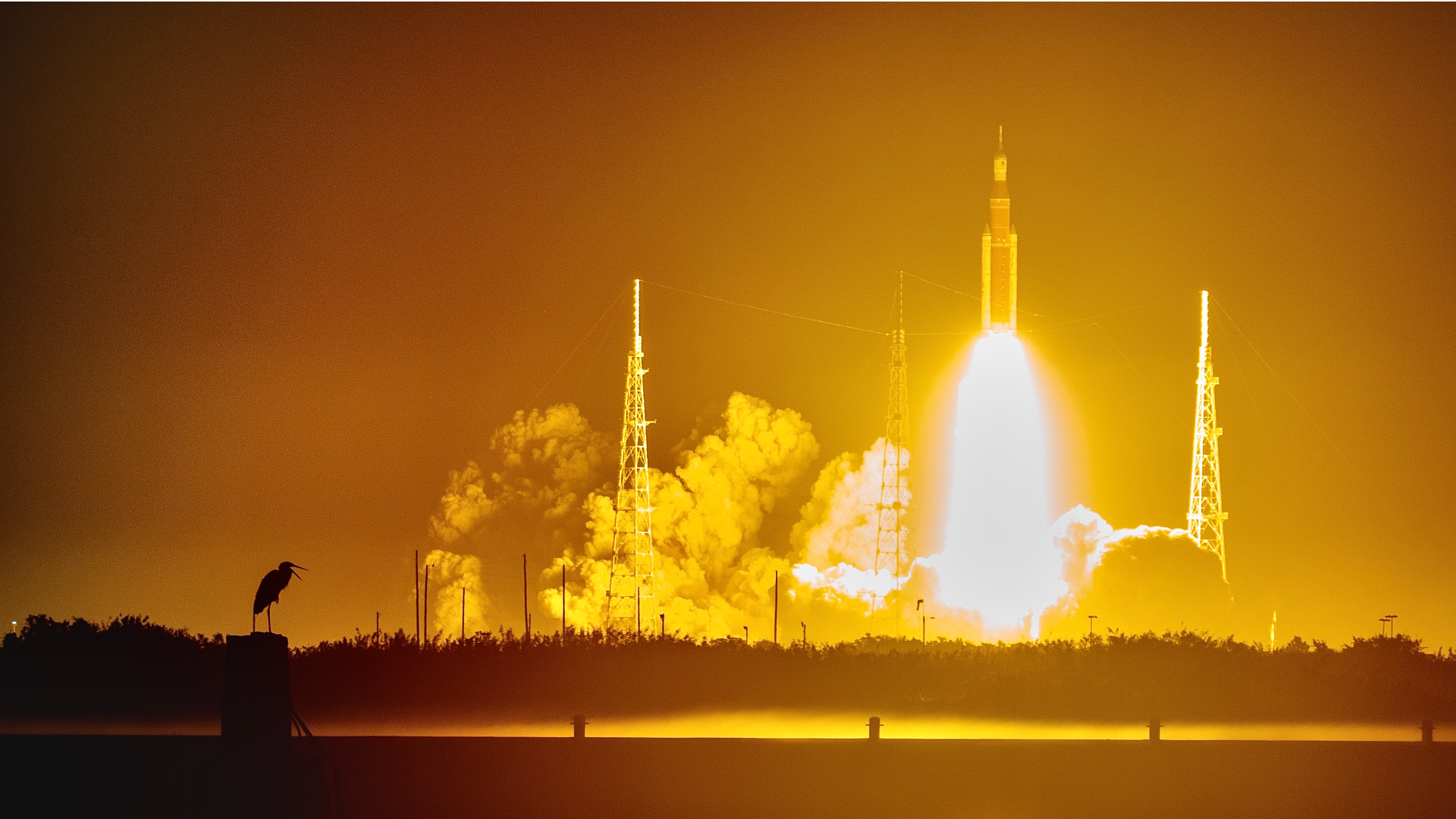Artemis 1 moon launch was as loud as 40 million bowls of Rice Krispies: study

A new study has found that the launch of NASA's Artemis 1 mega moon rocket created sound levels far more powerful than predicted.
To reach that conclusion, a team of investigators studied noise levels that were recorded using five different microphones located between 0.9 miles and 3.2 miles (1.5 to 5.2 kilometers) from Launch Pad 39B at Kennedy Space Center in Florida. Noise levels at each of the five microphones exceeded those that were predicted to be created by the launch of NASA's Space Launch System (SLS) rocket, in some cases by nearly 20 decibels (dB).
As anyone who has seen a launch in person can attest, rocket engines create a "crackling" sound due to the shock waves created by the intense sound pressure levels, or SPLs. In a statement, study co-author Whitney Coyle said that researchers "found the Artemis 1 noise level at 5 km [3 miles] had a crackling quality about 40 million times greater than a bowl of Rice Krispies." At that distance, noise levels were found to be 129 dB — louder than an ambulance siren or a chainsaw, and plenty high enough to damage hearing.
Related: No, NASA's massive Saturn V rocket didn't melt concrete with sound or set fires a mile away
Read more: The 10 greatest images from NASA's Artemis 1 moon mission
The study was conducted in part to help dispel myths and urban legends surrounding the noise levels associated with powerful rocket launches. For years, there have been claims that the launch of the Saturn V rocket used throughout the Apollo program was loud enough to melt concrete or ignite grass over a mile away. "We hope these early results will help prevent the spread of possible misinformation, as happened with the Saturn V," Brigham Young University physicist and study lead author Kent Gee said in a statement.
For context, according to the U.S. Department of Defense's Hearing Center of Excellence, a car horn will produce about 110 decibels, a rock concert around 120 decibels, and a chainsaw around 120. (Decibel levels are logarithmic; each 10 dB represents an order of magnitude increase.) Noise levels over 85 decibels can lead to permanent hearing loss with prolonged exposure; luckily, the launch of Artemis 1 lasted only a few minutes, and the next SLS launch is still at least a year away.
One of the reasons the launch of Artemis 1 was so loud was the incredible amount of thrust produced by the SLS, which is the world's most powerful rocket. The 322-foot-tall (98 meters) Space Launch System rocket features two solid rocket boosters that, combined with the vehicle's core stage, produce a total of 8.8 million pounds of thrust at liftoff. This new study argues that these solid rocket boosters "likely dominate the overall noise radiation" produced by SLS.
Breaking space news, the latest updates on rocket launches, skywatching events and more!
Having witnessed the launch myself, I can attest to the sheer power of the sound of SLS as it launched. From 3 miles (5 km) away, the sound pressure levels were loud enough to blow my hair back and rustle my pant legs. The video below, posted to Twitter by NASA Director of History and Information Services Bob Jacobs, illustrates what Artemis 1 sounded like from 3 miles (5 km) away. (Look for yours truly in the field in the foreground to the right of center!)
What a sight! #Artemis pic.twitter.com/slZ22AkMrNNovember 16, 2022
The study also found that the rocket produced sound waves "of sufficient intensity that the pressure rarefactions formed visible, propagating vapor clouds near the launch pad," the team wrote in their publication, and that sound levels created were 20 dB greater than those predicted by environmental assessments.
"Although this study is an important step forward, we still have a long way to go to understand everything about the generation, propagation and perception of rocket noise," Gee added.
The research has been published in the Acoustical Society of America's open-access journal JASA Express Letters.
Follow Brett on Twitter at @bretttingley. Follow us @Spacedotcom, or on Facebook and Instagram.

Brett is curious about emerging aerospace technologies, alternative launch concepts, military space developments and uncrewed aircraft systems. Brett's work has appeared on Scientific American, The War Zone, Popular Science, the History Channel, Science Discovery and more. Brett has English degrees from Clemson University and the University of North Carolina at Charlotte. In his free time, Brett enjoys skywatching throughout the dark skies of the Appalachian mountains.

